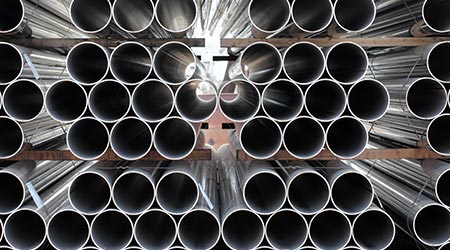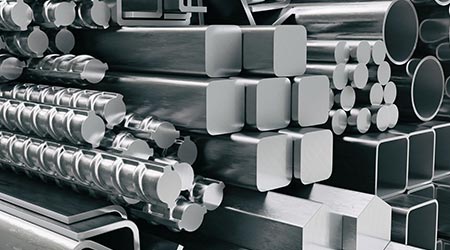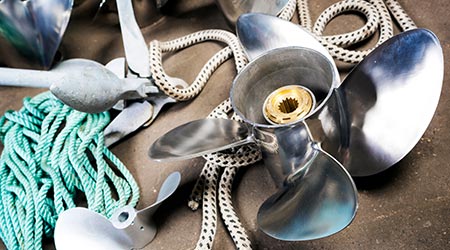
Stainless Steel, since its first cast in the year 1913, has come a long way. Today, Stainless Steel the versatile metal is widely used not only by the heavy industries but practically by all small and medium industries that manufacture our day to day utility products, be it cooking utensils or high precision electronic gadgetry. The demand base of the Indian stainless steel industry is second to the textile industry in terms of sheer magnitude. No doubt Stainless Steel is called - the versatile metal, because of its numerous applications and extraordinary properties.
Stainless Steel has two main characteristics. They all contain varying amount of chromium, possess a higher resistance to scaling at high temperatures.
Stainless Steel is not a single specific material but a group of steels containing a minimum of 11% chromium with or without varying addition of nickel, molybdenum, titanium and other elements.

Each one of the grades is grouped into one of three main stainless steel families. These families are named after their metallurgical microstructure. The three groups are Austenitic, Ferritic & Martensitic.

The absence of other alloying components implies ferritic stainless steel is known as plain Chromium steels. They have Chromium content somewhere in the range of 12 and 18%. The carbon content in ferritic treated steel is exceptionally low.
Basic ferritic grades incorporate the proprietary grade 430 Stainless steel and the least expensive stainless steel, grade 409 stainless steel. 409 stainless steel is the material of choice for automotive exhausts because of its blend of low value, corrosion resistance, and amazing formability.
Adding nickel to stainless steel in adequate sums changes the microstructure to "austenite".
70% of commercially produced stainless steel is austenitic. The most widely recognized grade of austenitic stainless steel is 304 (1.4301). Globally, 304 records for over half of stainless steel consumed. A common name for 304 stainless is 18/8. This name refers to the average composition, 18% chromium and 8% nickel. It is sometimes used generically for austenitic stainless steel other than 304, even if the actual composition is vastly different.

Other than 304 stainless steel, other regular austenitic grades incorporate the popular marine grade, 316 stainless steel and the machining bar grade, 303 stainless steel.

The first stainless steel to be developed for commercial applications was martensitic stainless steel. These steels were utilized for cutlery. When compared with other stainless steel, the martensitic stainless group have a relatively high carbon content (0.1 - 1.2%). Like ferritic stainless steel, they are plain chromium steels containing between 12 and 18% chromium.
Martensitic grades include 420 stainless steel, which is utilized in building applications like shafts and 440C stainless steel – the hardest and most abrasion-resistant of all the stainless steel.